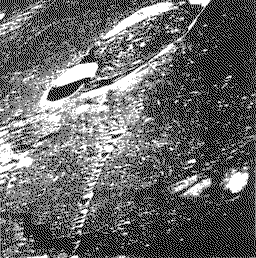 |
Science Frontiers ONLINE No. 96: Nov-Dec 1994 |
|
|
Lunar Crater Chains
The recent breakup of comet Shoemaker-Levi 9 into a long procession of fragments that subsequently crashed into Jupiter (SF#95) causes one to wonder whether similar events have occurred elsewhere in the solar system. On bodies with solid surfaces, the impacts of such processions would likely result in chains of craters. Jupiter's moon, Callisto, in fact, displays a dozen or so crater chains that might be attributed to processions of projectiles.
 The crater chain on the floor of the lunar crater Davy (Nasa) |
"...the Davy and perhaps the Abulfeda chains were created by tidally disrupted 'rubble pile' asteroids."
(Melosh, H.J., and Whitaker, E.A.; "Lunar Crater Chains," Nature, 369: 713, 1994.)
Comment. It is only natural to ask if the earth itself also bears the scars inflicted by similar processions of celestial debris. In SF#80, we described one such possibility located in Argentina. There are also those several hundred thousand Carolina Bays concentrated along the southeastern U.S. seacoast. These shallow depressions are in a shotgun pattern but are also thought to be the consequence of impacts -- perhaps a cloud of debris rather than a procession. (SF#82)
Lunar craters display many anomalies. See our catalog: The Moon and the Planets. Ordering information here.